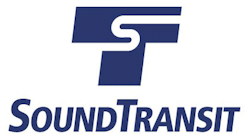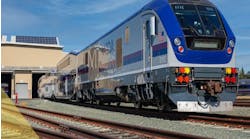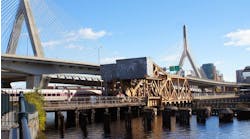Sound Transit selected HDR to complete final design of an urban rail-transit project known as the Tacoma Link Expansion. When complete, it will improve access to jobs and health care, particularly for underserved neighborhoods.
At a cost of roughly $175 million, the 2.4-mile extension of the Tacoma Link light-rail system in Tacoma, Washington, will include an addition to the system’s existing vehicle maintenance facility. The facility will be expanded to accommodate a new fleet of vehicles. HDR’s design also will include six new transit stations and relocation of an existing terminus station. Final design is scheduled for completion by the end of 2017 with construction on track to begin in 2018.
The existing, 1.6-mile Tacoma Link line terminates at the Tacoma Dome on one end and the Theater District on the other, with four stops in between. Extended service will connect the Central Business District, Stadium Historic Business District, Hilltop neighborhood and major medical centers along Tacoma’s “Medical Mile.”
HDR’s final design will be custom tailored to the unique needs of Sound Transit and the city of Tacoma, an urban center heavily trafficked by cars and bicycles. Numerous special characteristics differentiate it from other lines in Sound Transit’s Link system. They include smaller scale vehicles, shared traffic lanes and simplified urban platforms.
Extensive public outreach and stakeholder feedback ultimately led to the extension’s route selection and station placement. Ongoing outreach and stakeholder input will continue to inform decisions during final design.
HDR’s design strategy for the Tacoma Link Expansion embraces the lean project approach championed by Sound Transit. One example is the choice of a low-voltage traction power system that allows existing electrical infrastructure to power Tacoma Link vehicles, rendering unnecessary the costly installation of high-voltage infrastructure. “We are looking at ways to simplify train control and make long-term operation more cost efficient,” said Rick Nannenga, HDR Principal Project Manager. “This is an urban light rail system that will operate in a public roadway, so there are a lot of different disciplines involved.”
Sound Transit’s lean approach may also lead to new GPS and “dead-reckoning” technology for vehicle detection. If adopted, this technology would make long-term operations more adaptable, cost-efficient and reliable. Tacoma Link would be among the first guided-rail transit systems to use the technology, which eliminates the need for more traditional and expensive installations and maintenance.



